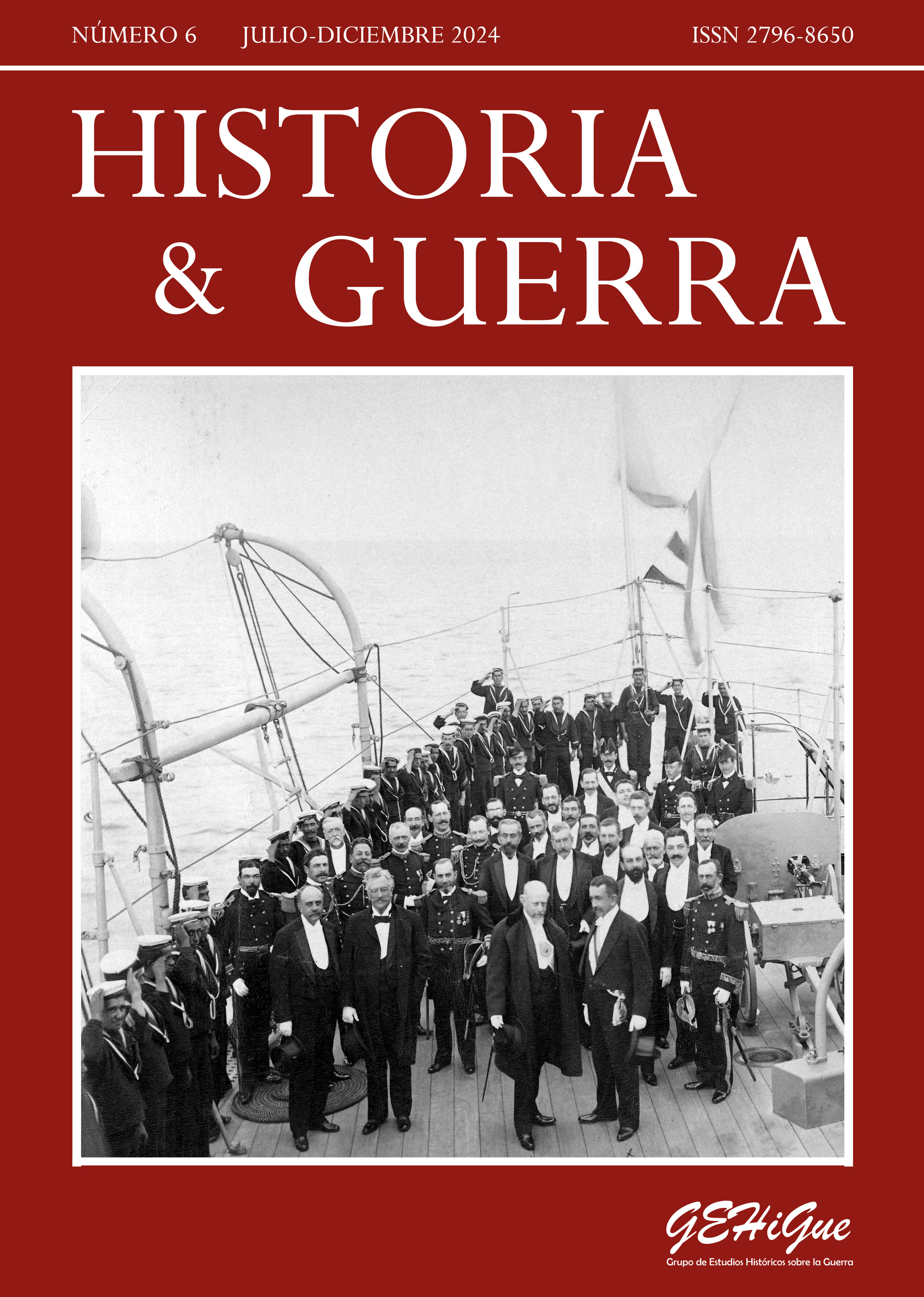Narvik: The Feelings in the Mountain Troops and the Charisma in the Leadership of General Dietl
Abstract
During the Second World War, as part of the German forces' campaign to invade Norway, the Battle of Narvik unfolded between April and June of 1940. This analysis seeks to explore, from a different perspective, certain facets associated with this engagement, with a focus on the mountain troops involved, the charismatic leadership exhibited by one of its division commanders, and the harsh conditions endured by combatants in a hostile environment. Esprit de corps, courage, traditions, the example set by those leading troops, adversities stemming from challenging geography, and the actions of the enemy are intimately tied to emotional and psychological aspects. These facets, often overlooked in the study of the History of War, can, as elucidated in the subsequent paragraphs, prove decisive in shaping combat actions.Downloads
References
Budesarhiv. Eduard Dietl. PERS 6/22.
Citino, R. (2009). La Muerte de la Wehrmacht. Las Campañas de 1942. Crítica.
Citino, R. (2018). El Modo Alemán de la Guerra: De la Guerra de los Treinta Años al Tercer Reich. Salamina.
Citino, R. (2014). La Wehrmacht se retira. Luchando una guerra perdida, 1943. Platea.
Clausewitz, C. von (1999). De la Guerra. Ministerio de Defensa.
Dietl, G. y Herrmann, K. (1957). General Dietl. Círculo Miliar.
Fraquelli, C. (2009). Los Teatros de Operaciones de Montaña Invernal y las Tropas de Montaña [Trabajo final de licenciatura inédito]. Escuela Superior de Guerra.
Fuller J. F. C. (1988). La II Guerra Mundial (1939-1945). Historia Táctica y Estrategica. Círculo Militar.
Grischany, T. (2015). Der Ostmark treue Alpensöhne. Die Integration der Österreicher in die großdeutsche Wehrmacht, 1938–45. V & R Unipress.
Jara Fuente, et. al. (coord.). (2020). Las emociones en las historia. Una propuesta de divulcacion. Ediciones de la Universidad de Castilla-La Mancha.
Keegan, J. (1996). The Battle for History. Re-fighting World War II. Vintage.
Keegan, J. (2005). The Second World War. Peguin Books.
Keegan, J. (2015). La mascara del mando. Un estudio sobre liderazgo. Turner Noema.
Klatt, P. (1958). Die 3. Gebirgs-Division, 1939-1945. Bad Nauheim.
Liddell Hart, B. (1948). The Other Side of the Hill. Germany's Generals Their Rise and Fall, with Their Own Account of Military Events 1939-1945. Cassell.
Liddell Hart, B. (1970). History of the Second World War. Cassell.
Liddell Hart. B. (1984). La Aproximación Indirecta. Círculo Militar.
Lossberg, B. von (1951). En el Estado Mayor General de las Fuerzas Armadas Alemanas. Informe de un Oficial de Estado Mayor. Círculo Militar.
Lucas, J. (2000). Hitler's commanders: German bravery in the field, 1939-1945. Cassell and Sterling.
Lunde, H. (2010). Hitler´s Pre-emptive War. The Battle for Norway, 1940. Havertown.
Medina Brener, L. (2015). “Comunidades emocionales: hacia la apertura de la historia de las emociones”. Historia y grafía, (45), 203-313.
Milevski, L. (2020). “Battle and its emotional effect in war termination”. Comparative Strategy, (39), 535-548.
Northern Theatre: Indestructible Dietl. (June 10, 1940). The Times.
Rosenwein B. y Cristiani R. (2018). What is the History of Emotions? Polity.
Stearns, P y C (1985). “Emotionology: Clarifying the History of Emotions and Emotional Standards”. The American Historical Review, 90, 4, p. 813.
Truppenführung. (October 17, 1933). German Field Service Regulations
Williamson G. (1996). German Mountain & Ski Troops 1939-45. Osprey.
Copyright (c) 2024 Carlos María Fraquelli

This work is licensed under a Creative Commons Attribution-NonCommercial 4.0 International License.

Historia & Guerra uses an international license Attribution-NonCommercial 4.0 International (CC BY-NC 4.0).
You are free to:
- Share — copy and redistribute the material in any medium or format.
- Adapt — remix, transform, and build upon the material.
- The licensor cannot revoke these freedoms as long as you follow the license terms..
Under the following terms:
Attribution — You must give appropriate credit, provide a link to the license, and indicate if changes were made. You may do so in any reasonable manner, but not in any way that suggests the licensor endorses you or your use.
NonCommercial — You may not use the material for commercial purposes.
No additional restrictions — You may not apply legal terms or technological measures that legally restrict others from doing anything the license permits.
Notices:
You do not have to comply with the license for elements of the material in the public domain or where your use is permitted by an applicable exception or limitation.
No warranties are given. The license may not give you all of the permissions necessary for your intended use. For example, other rights such as publicity, privacy, or moral rights may limit how you use the material.
The author retains all rights to his work without restriction and grants Historia & Guerra the right to be the first publication of the work. Likewise, the author may establish additional agreements for the non-exclusive distribution of the version of the work published in the Journal (for example, placing it in an institutional repository or publishing it in a book), with the acknowledgment of having been first published in this journal. Use of the work for commercial purposes is not permitted.














.jpg)















